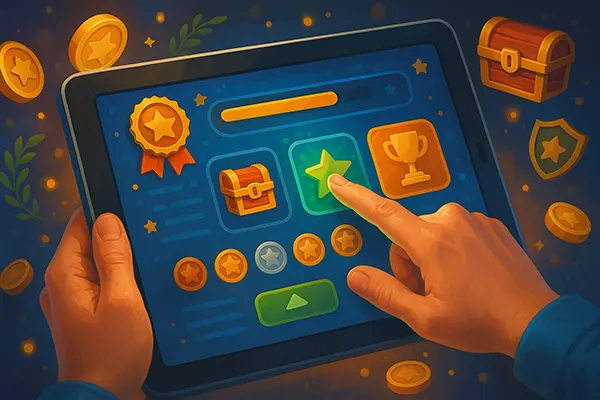
Gamification Beyond the Reels: How New Mechanics Are Redefining Traditional Game Formats
In the evolution of digital entertainment, one trend has stood out for its transformative potential—gamification. No longer confined to slot reels and spinning wheels, it has seeped into the broader structure of interactive experiences. From missions and achievements to dynamic loyalty systems, game mechanics are reshaping how players engage with familiar formats. As of February 2025, this shift is particularly evident in how online casinos and other digital environments incorporate fresh mechanics that boost retention, engagement, and user satisfaction.
New Layers of Engagement in Familiar Formats
Today’s game developers are moving far beyond standard spins or betting systems. Instead, they integrate layered interactions that reward players not just for wins, but for actions, time spent, and participation in challenges. These mechanics allow users to feel consistently involved, rather than passively entertained.
For example, reward tracks or progress bars, inspired by video games, grant prizes as users reach specific milestones. This encourages long-term engagement and creates an incentive to return daily or weekly. Unlike simple jackpots, these systems provide smaller, more frequent gratification moments, making the experience more dynamic.
Additionally, seasonal events, often tied to global festivities or internal milestones, provide limited-time missions. Players are motivated to complete goals within deadlines, bringing a sense of urgency and narrative development to routine gameplay. The impact of these features lies in their ability to blend routine with novelty, keeping interest consistently high.
The Rise of Missions and Objectives
Missions introduce task-based gameplay that shifts attention from luck to achievement. Whether it’s placing a certain number of bets, winning on a specific day, or reaching a cumulative score, players become goal-driven. These objectives provide clarity and structure to the experience, making it feel less random and more skill-based.
This format resonates especially well with younger demographics who are used to mobile and console games structured around goals and progress. The gamified approach appeals not only to competitiveness but also to a psychological need for completion and mastery.
By incorporating missions with varying difficulty levels, operators can cater to both casual users and more dedicated players. This segmentation enhances user satisfaction and prolongs engagement without necessarily increasing spending pressure.
Loyalty Systems Reinvented
Loyalty mechanics, traditionally limited to point accumulation, have become significantly more nuanced. Instead of simple tier systems, gamified loyalty now mimics role-playing game progression, where users ‘level up’ and unlock abilities, perks or access to exclusive events.
This approach fosters a deeper emotional connection with the game environment. Players aren’t just collecting points—they’re building a virtual identity. Their loyalty is expressed through avatars, badges, rankings, and social visibility, all of which enhance motivation and satisfaction.
Furthermore, loyalty-based competitions—where users can climb leaderboards over a defined period—introduce social and competitive elements. The thrill isn’t only in the prize, but in the act of competing, comparing, and achieving. This shared experience fosters community and organic engagement.
Interactive Economies and Virtual Progression
Gamified loyalty now often includes in-game currencies that can be earned and spent within the ecosystem. Users feel in control, choosing how to invest their rewards—be it customising their experience, unlocking games, or accessing premium content.
Such systems increase perceived value of rewards, even if they hold no monetary equivalence. The freedom of choice and sense of ownership elevate the entire engagement model, aligning it with user preferences rather than imposing predefined rewards.
Moreover, dynamic balancing ensures all players—new or old—can participate meaningfully in the economy. This inclusiveness is key to retaining a broad audience while still incentivising dedication and activity.

Gamification as a Narrative Experience
Beyond structure and incentives, gamification increasingly relies on storytelling. Environments are built not just around gameplay, but around evolving story arcs that give context to actions. Users don’t just play—they participate in a journey.
Whether it’s a quest across realms, progress through a fictional calendar, or the development of a personal in-game character, narrative framing transforms repetitive actions into meaningful progress. It gives players purpose and emotional investment, a strategy long used in mainstream games and now successfully applied to digital gambling and interactive content.
This immersive approach also improves user retention. If users are curious about what happens next in a story or are emotionally invested in their avatar’s progression, they’re more likely to return. This builds long-term loyalty and deepens the player’s relationship with the product.
Social Elements and Community Integration
One of the newest directions in gamification is social interaction. Cooperative missions, team-based tournaments, and group achievements introduce shared goals and social dynamics. It shifts the experience from solo play to collective involvement.
Chat rooms, shared progress tracking, and mutual bonuses for inviting or playing with friends integrate the social fabric into gameplay. This peer reinforcement loop amplifies engagement, as players feel encouraged and supported by their network.
Such community features also allow operators to gain feedback and understand user preferences in real time. It helps tailor the environment not just to single-player satisfaction but to a holistic, socially driven ecosystem.
